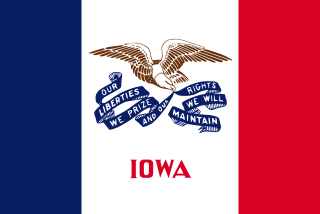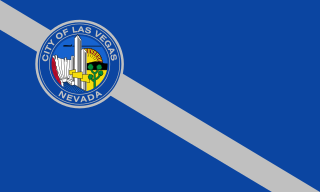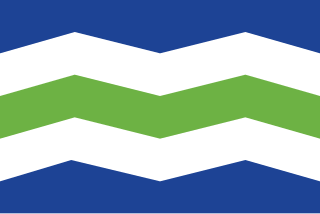
The flags of the U.S. states, territories, and the District of Columbia exhibit a variety of regional influences and local histories, as well as different styles and design principles. Modern U.S. state flags date from the turn of the 20th century, when states considered distinctive symbols for the 1893 World's Columbian Exposition in Chicago, Illinois. Most U.S. state flags were designed and adopted between 1893 and World War I.

The flag of the state of Iowa is a vertical tricolor flag designed by Dixie Cornell Gebhardt in 1917. Iowa, United States legislators officially adopted the flag in 1921.

The Commonwealth of Massachusetts has been represented by official but limited-purpose flags since 1676, though until 1908 it had no state flag per se to represent its government. A variant of the white flag with blue seal was carried by each of the Massachusetts volunteer regiments during the American Civil War alongside the National Colors. An exception were the two "Irish regiments", each of which was permitted to carry an alternative green flag with a harp symbol.

The city flag of Los Angeles consists of a background of three notched stripes of green, gold and red. The flag was designed by Roy E. Silent and E.S. Jones in 1931 for the Los Angeles sesquicentennial from 1781.

The city flag of Portland, Oregon, consists of a green field on which is placed a white four-pointed star from which radiate blue stripes, each bordered by L-shaped yellow elements (esquarres). Narrow white fimbriations separate the blue and yellow elements from each other and from the green background. The official ordinance specifies a height of 3 feet and a length of 5 feet for the flag.

The flag of Las Vegas consists of blue field with a diagonal gray stripe running from the top of the hoist to the bottom of the fly. Las Vegas' city seal, adopted on March 16, 1966 and designed by Richard Thompson, is located in the canton breaking the stripe.

The flag of Baton Rouge contains a red field with a small shield and cursive text reading "Baton Rouge". The current flag was adopted in 1995 by the city council, replacing an older flag that had been in use since 1968.

New England has no official flag. However, there have been many historical or modern banners used to represent the region in its history. While there are some variations, common designs include a plain colored field with a pine tree in the canton. The eastern white pine is the most common and prominent symbol of New England and is featured on many of the region's flags.

The current flag of Billings, Montana is a triband of dark blue and white with the city seal on the central white panel. The seal shows the city skyline line-drawn in blue, with a red disc representing the sun. The seal is outlined in blue with the text "Star of the Big Sky Country" in red capitals. It was designed by Fernando Méndez and adopted in June 1986.

The flag of Phoenix, Arizona contains a maroon field with a white phoenix emblem in the center. Its design is the second in the city's history and has been in place since 1990, replacing a flag that was adopted in 1921.

The city flag of Mobile is a flag which represents the seal of the six flags that have flown over the state of Alabama before and since it became a state. The flag was adopted in December 1968 after one was suggested by Commissioner Lambert C. Mims. The original seal which was used in the flag was adopted in 1961.

The city flag of San Antonio, Texas was originally drawn by Spanish–American War veteran William W. Herring on May 28, 1933. The design saw significantly more usage than the official flag, but was never officially adopted until 1976. The current flag is a slightly modified version of Herring's design, most notably removing the text formerly displayed.

The current flag of San Jose, California features a triband of gold on top, white in the middle, and blue on the bottom with the city's official seal in the center. It has been the official flag since 1984.

The city flag of Austin, Texas consists of a white field with the seal of Austin without the surrounding circle of text. Below the seal of Austin is the text "CITY OF AUSTIN", written in blue and arched upwards.

The flag of Charlotte, North Carolina was adopted in 1929 and consists of a white saltire on a blue field, with the city seal in the center. A secondary flag, with a green field and a white crown in the center, was introduced in 1985 and is primarily used at city government buildings. Charlotte is one of the few places to have two official flags with equal status. The government of Mecklenburg County, while having its own flag, has made use of the 1985 flag at official events.

The current city flag of Columbus, Ohio is a yellow-white-red vertical triband with the city seal on a blue field. Officially, the flag was adopted in 1929, although it is unknown if the flag was ever flown when it was first adopted.

The current city flag of El Paso, Texas is an augmentation of the city's seal in the center of a dark blue field, which has been in place since 1962.

The flag of South Bend, Indiana was adopted by the city council during the mayorship of Pete Buttigieg on April 25, 2016. It is a field of white and yellow separated by a two blue curved lines with a white line between them and a red six-pointed star in the upper left corner.

The city flag of Anchorage, Alaska was adopted by the city of Anchorage in 1973. It is a field of yellow with the seal of the city, which features a blue anchor in the foreground as well as a blue airplane, yellow sun, and yellow sailboat in the background. The words "ANCHORAGE ALASKA" are also present.

The flag of Burlington, Vermont was adopted by the Burlington city council on November 27, 2017 during the mayorship of Miro Weinberger. It is five horizontal, zig-zag stripes of blue, white, green, white, and blue.





















